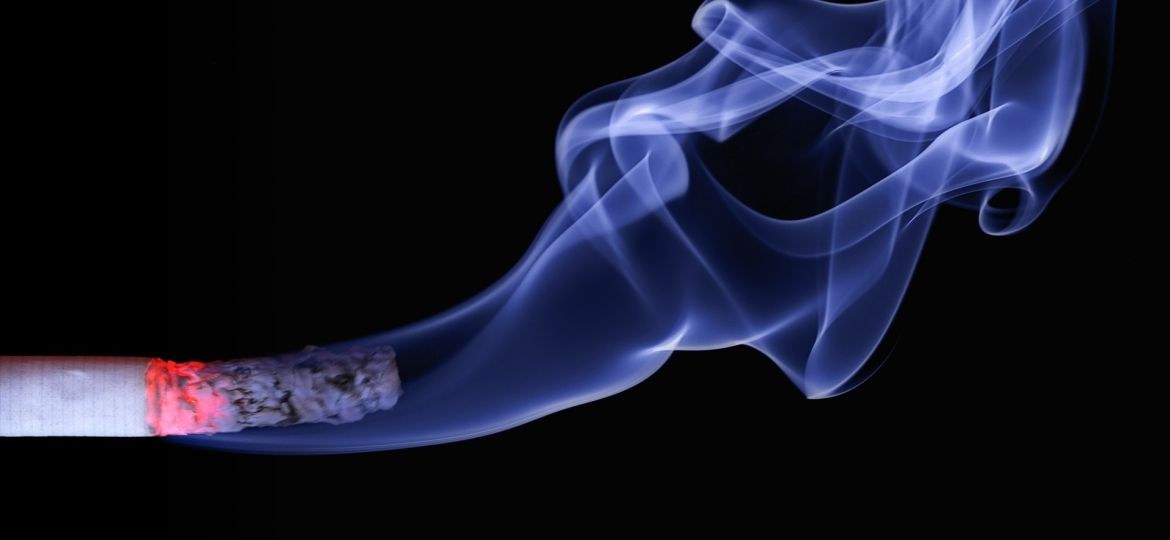
Years of complaints from St. Olaf community members about secondhand smoke drove the college to form a working group tasked with reforming the smoking policy.
The working group is considering creating designated smoking areas, moving ashtrays further from buildings and introducing resources to help students who wish to quit smoking.
Environmental Health and Safety (EHS) and the Safety Committee, two parties tasked with promoting the health and safety of students and workers, formed the working group in the fall of 2018. The parties reached out to students and various staff departments, including Residence Life, the Wellness Center and Human Resources (HR), for volunteers to join the working group, Vice President for HR and working group member Michael Goodson wrote in an email. The group held its first meeting of the year in late September.
Currently, St. Olaf’s smoking policy bans smoking in any building on campus, Goodson wrote. However, the policy does not address the specific distance from buildings community members need to be to smoke permissibly, and whether different buildings have different policies. Different pages on the St. Olaf website list inconsistent distance requirements. The working group will address the distance policy, Goodson wrote.
Designated smoking areas, another potential change, could alienate international students who smoke, former working group member Carlos Fernandez ’21 said.
“It will look very bad if you designate areas that all of these students that you see will be people of color, be people of different accents, and everything, are buried just in one corner of campus,” Fernandez said.
The working group is aware that new smoking policies could estrange international students, and recruited representatives from the Taylor Center and an international student who smokes in light of this consideration, Goodson wrote.
The working group has yet to determine specific spaces that could serve as designated smoking areas, working group member Bakr Al-Taie ’21 said. Al-Taie is inquiring about which spaces could serve this function, in part by speaking to students who smoke.
Fernandez thinks the college ought to move ashtrays further away from building entrances to reduce secondhand smoke exposure. While the working group has considered this remedy, moving the ashtrays further from buildings would mean more exposure to harsh weather conditions for smokers, said Dean of Students and member of the working group Rosalyn Eaton ’87.
“The ashtrays have been moved away from the doors numerous times around Buntrock and the Library but people keep moving them back,” Goodson wrote. Goodson did not indicate who has moved the ashtrays away from the doors or who keeps moving them back.
The working group is considering creating resources for community members who wish to quit smoking and will research similar measures at other colleges, Goodson wrote.
Fernandez thinks strict limitations on smoking, especially to the point of rendering St. Olaf a smoke-free campus, might be too restrictive for students.
“To some extent, students do [smoke] to de-stress,” Fernandez said. “If we cannot smoke, we cannot drink, we cannot what? Nothing, right?”
The working group has yet to consider whether St. Olaf should be a smoke-free campus, Goodson wrote. It will research institutions with smoke-free policies.
As most smokers begin smoking by young adulthood, colleges and universities’ efforts to restrict and monitor tobacco consumption “can help reduce the prevalence of tobacco product use,” according to a Centers for Disease Control and Prevention report. These efforts can also reduce secondhand smoke exposure.
Last year, the working group submitted a document containing smoking policy reform recommendations to the College. The Manitou Messenger requested access to this document, but Goodson wrote that it is not public.
Al-Taie, Mattias Kostov ’20, Eaton, Chemical Hygiene Officer Patrick Ceas, Environmental Health and Safety Director Elizabeth Haase and Goodson confirmed they serve on the working group. Goodson, Ceas and Haase did not provide the names of the other members.
St. Olaf does not have policies regarding smoking cannabidiol (CBD) or medical marijuana, Goodson wrote.
The vaping policy largely mirrors the smoking policy, Eaton said.
Goodson wrote that the working group plans to meet once a month and submit a new draft of recommendations to the President’s Leadership Team by December 2019.

